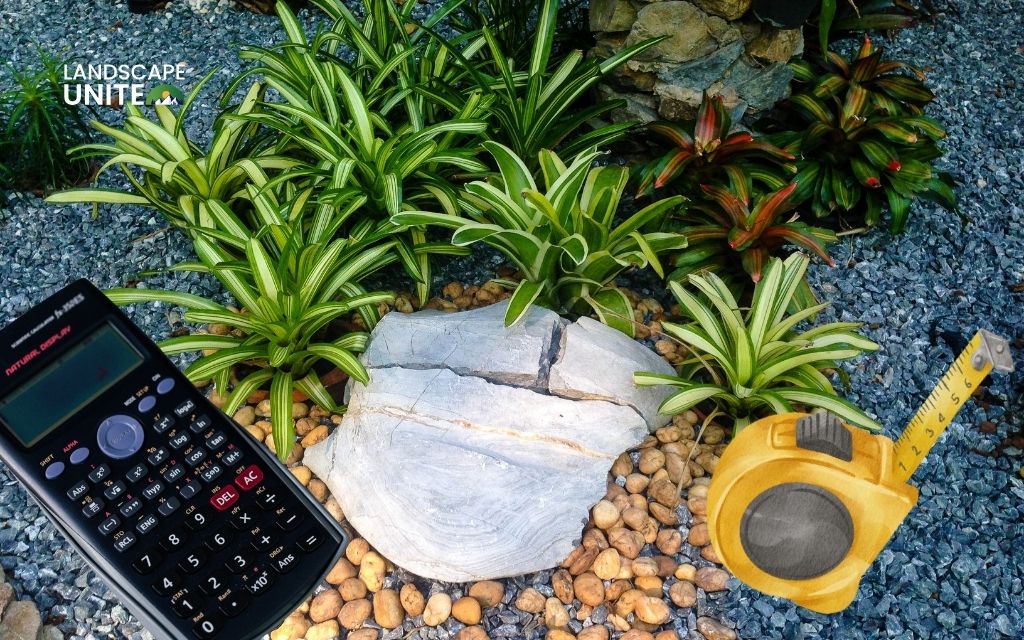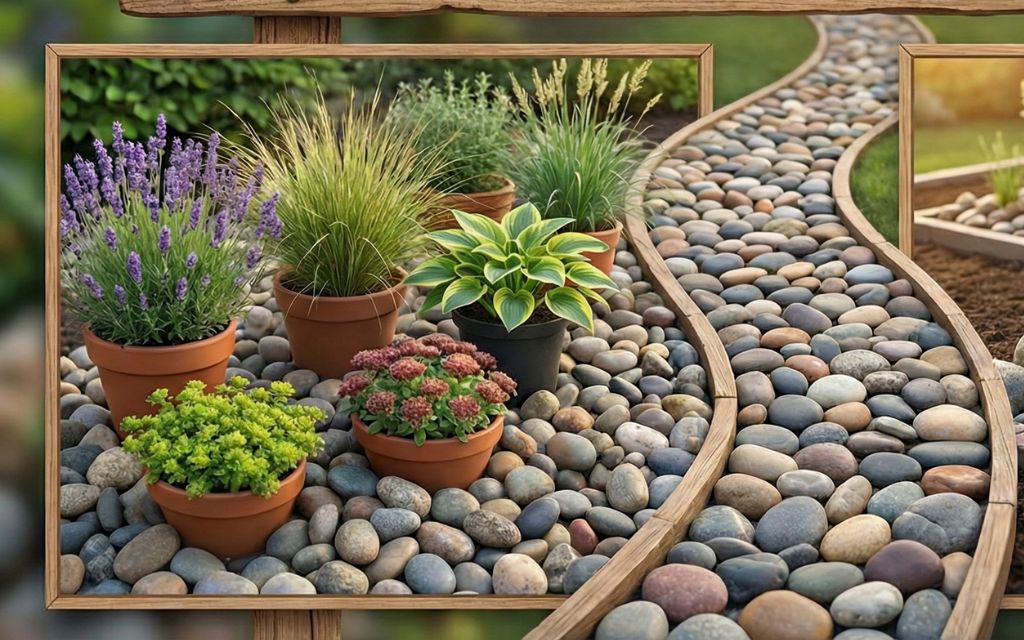Artificial grass maintenance involves essential practices that preserve both the appearance and structural integrity of your synthetic lawn. Unlike natural grass, artificial turf maintenance focuses primarily on cleanliness, proper drainage, and preventing fiber damage through regular upkeep routines.
The key to successful synthetic turf care lies in consistent attention to detail rather than intensive labor. Regular cleaning, debris removal, and periodic brushing form the foundation of effective maintenance, ensuring your artificial grass continues to provide the lush, green appearance that initially attracted you to this landscaping solution.
Continue reading to learn these 10 essential maintenance tips that every homeowner should know.
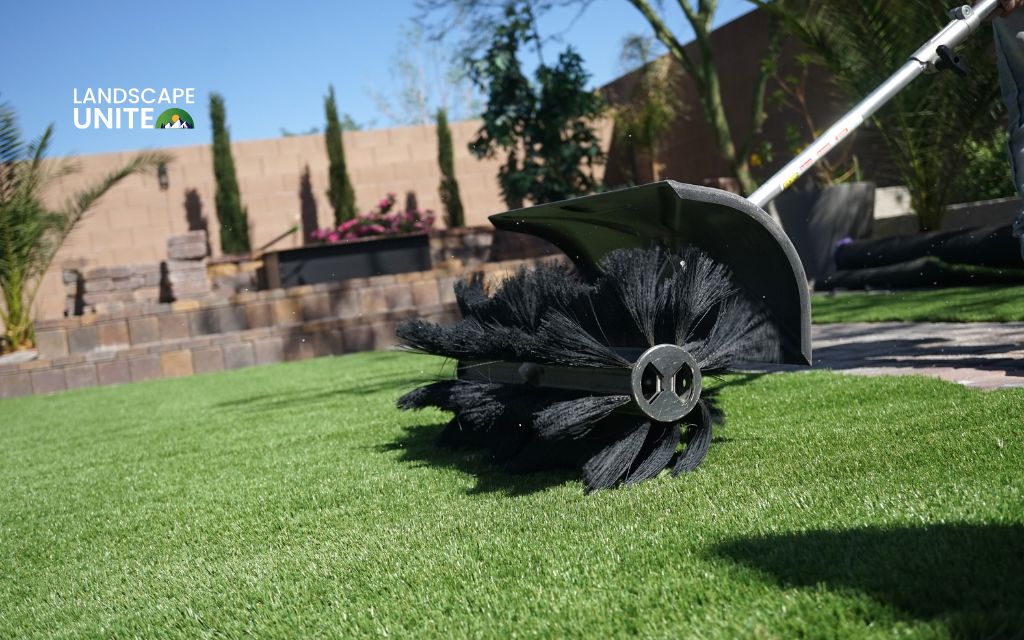
10 essential tips for artificial grass maintenance
Understanding how you maintain artificial grass requires following maintenance strategies that address both daily upkeep and seasonal care requirements.
These comprehensive tips will help you preserve your synthetic lawn’s beauty and functionality for years to come.
1. Regularly brush your artificial grass
Proper brushing techniques are fundamental to maintaining artificial grass appearance and preventing premature wear. The synthetic fibers in your turf naturally compress under foot traffic, creating matted areas that diminish the lawn’s aesthetic appeal and comfort.
Regular brushing restores the upright position of grass blades, preventing permanent matting and maintaining the natural texture that makes artificial grass visually appealing. This practice also helps redistribute infill material evenly across the surface.
2. Clean off debris and leaves
Organic debris accumulation poses significant threats to artificial grass health, creating moisture retention problems that can lead to mold growth, unpleasant odors, and premature turf degradation.
Fallen leaves, twigs, and organic matter trap moisture against the turf surface, creating ideal conditions for bacterial growth and potential fiber staining. Additionally, decomposing organic material can generate acidic compounds that may damage synthetic fibers over time.
Regular debris removal maintains both aesthetic appeal and functional performance.
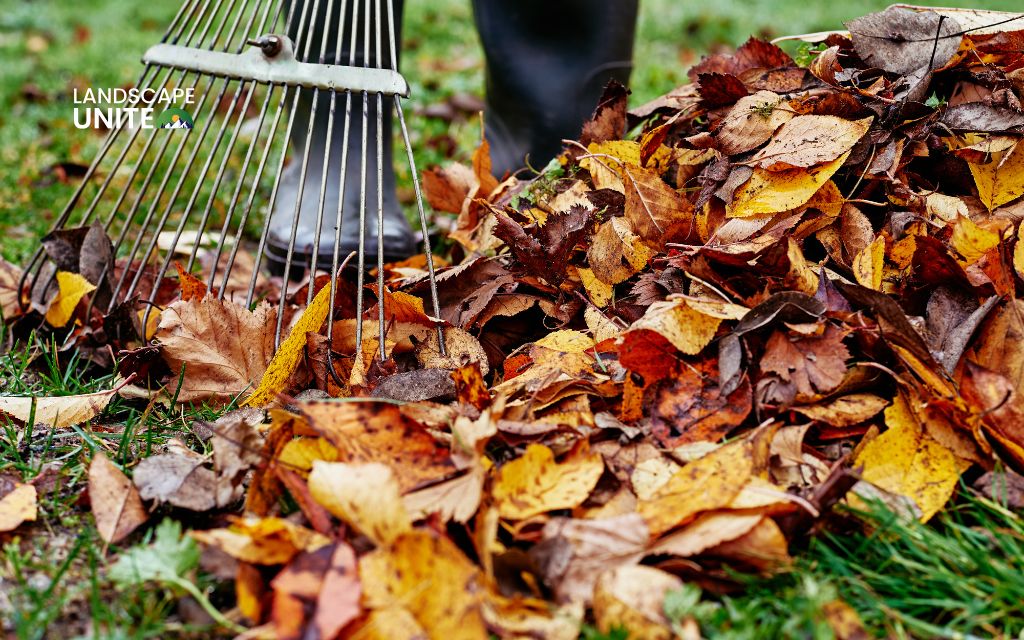
3. Rinse the grass with water
Regular water rinsing serves multiple maintenance functions, from removing surface contaminants to refreshing the turf’s appearance and preventing odor development.
Water removes accumulated dust, pollen, pet waste residues, and general airborne contaminants that can dull the turf’s appearance. Regular rinsing also helps prevent the buildup of substances that might attract insects or create unpleasant odors.
This simple practice significantly extends artificial grass lifespan while maintaining its visual appeal.
4. Clean pet waste immediately
Pet waste management represents one of the most critical aspects of artificial grass maintenance. Proper waste removal techniques protect both your investment and your family’s well-being.
Pet urine and feces contain bacteria and ammonia compounds that can penetrate turf fibers and infill material, creating persistent odor problems that become difficult to eliminate over time. Quick action prevents these substances from setting into the synthetic materials.
You should remove solid waste using appropriate tools, then thoroughly rinse the affected area with water to dilute and remove liquid waste. For persistent odor areas, apply enzyme-based cleaners formulated for artificial grass to break down organic compounds.
5. Use pet-specific turf deodorizers
Specialized deodorizing products designed for artificial grass provide essential odor control. These products offer targeted solutions that standard cleaning methods cannot achieve.
Pet-specific turf deodorizers contain enzymes and bacteria cultures that actively break down organic compounds causing persistent odors, rather than simply masking smells with fragrances. This biological approach provides longer-lasting odor control.
Choose non-toxic, eco-friendly deodorizers that won’t harm pets, children, or the artificial grass itself. Avoid products containing harsh chemicals that might damage synthetic fibers or create soil contamination.
6. Address stains promptly
Stain prevention and removal require immediate attention and appropriate cleaning techniques. Different stain types demand specific treatment approaches for optimal results.
Food spills, beverage accidents, oil-based substances, and various outdoor contaminants can create lasting stains if not addressed quickly. Understanding stain composition helps determine the most effective removal approach.
Begin with gentle cleaning using mild detergent and warm water, working from the stain edges toward the center to prevent spreading. Rinse after cleaning to remove all detergent residues that might attract additional dirt.
7. Check for drainage issues
Look for standing water after rainfall, persistent moisture in specific areas, or unusual odors that might indicate poor water flow through the turf system. These symptoms suggest drainage system problems requiring attention.
Inspect your artificial grass after heavy rainfall or irrigation, noting areas where water pools or drains slowly. Pay particular attention to low spots, areas near hardscaping, and zones with heavy compaction from foot traffic.
Minor drainage issues might require simple solutions like adding infill material or brushing compacted areas. Serious problems may need professional intervention, including base regrading or drainage system modifications.
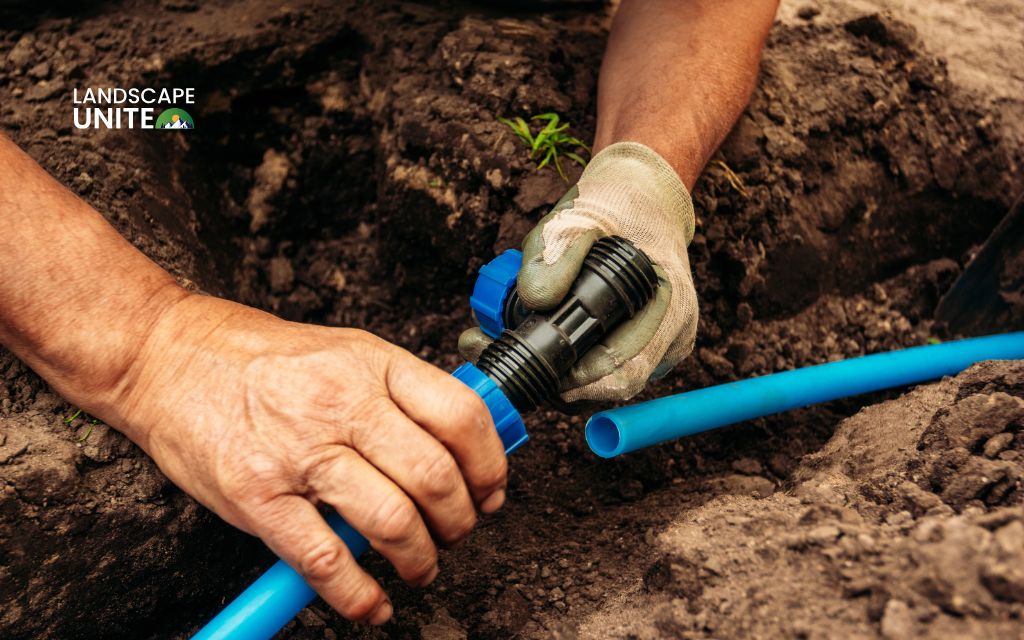
8. Fix turf joints and seams
Seam integrity directly impacts artificial grass appearance and longevity, making regular inspection and prompt repair essential maintenance practices. Damaged seams can allow moisture penetration and create safety hazards if left unaddressed.
Examine seams regularly for separation, lifting edges, or visible adhesive failure. Pay special attention to high-traffic areas and zones exposed to temperature extremes that might stress seam connections.
Minor seam repairs often require turf adhesive or specialized seam tape application. For significant damage, professional repair services ensure proper materials and techniques that maintain warranty coverage and optimal performance.
9. Avoid harsh chemicals and solvents
Bleach, ammonia-based cleaners, petroleum-based solvents, and acidic cleaning products can damage synthetic fibers, causing discoloration, brittleness, or complete fiber breakdown. These substances may also harm infill materials and underlying drainage systems.
Mild dish soap, specialized turf cleaners, and enzyme-based products provide effective cleaning without risking damage.
Always dilute cleaning products according to manufacture instructions and test in inconspicuous areas before widespread application.
10. Maintain infill levels
Infill material provides structural support, weight distribution, and performance characteristics that make artificial grass functional and comfortable.
Check infill levels monthly, looking for areas where material has displaced or compacted excessively. High-traffic zones typically require more frequent infill addition than low-use areas.
Regular infill maintenance ensures optimal turf performance and extends overall system lifespan.
Why is maintenance important for artificial grass?
Understanding the importance of regular maintenance helps homeowners appreciate the value of consistent care routines and make informed decisions about professional services versus DIY approaches.
Preserving aesthetics and durability
- Regular maintenance prevents the common problems that make artificial grass look worn or neglected. Proper care maintains the lush, green appearance that provides curb appeal and personal satisfaction with your landscaping investment.
- Artificial grass is a significant investment, with quality installations costing thousands of dollars. Proper maintenance routines can extend turf lifespan from the typical 10-15 years to 20 years or more, maximizing return on investment.
- Well-maintained artificial grass continues to provide the functional benefits that initially attracted homeowners, including consistent appearance, drainage, and comfortable surface texture for family activities.
Minimizing health risks
- Regular cleaning prevents the accumulation of organic matter and moisture that create ideal conditions for harmful bacteria and mold growth.
- Proper maintenance removes pollen, dust, and other airborne allergens that can accumulate on artificial grass surfaces, creating a more comfortable environment for family members with allergies or respiratory sensitivities.
- Regular inspection and maintenance identify potential safety hazards such as loose seams, damaged areas, or foreign objects that might cause injuries during normal turf use.
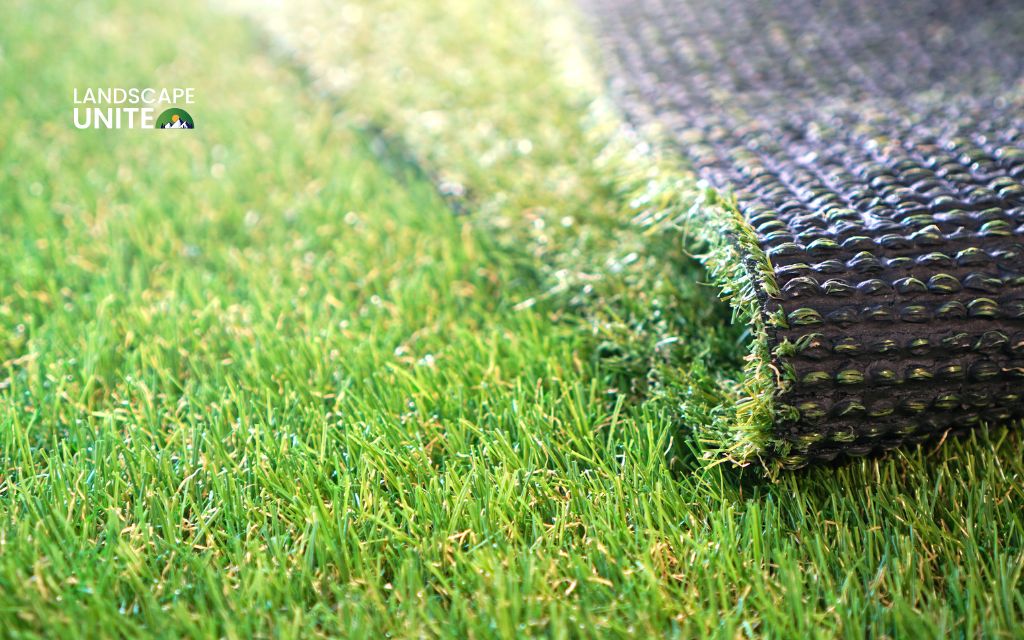
What is artificial grass maintenance equipment?
Having appropriate tools and equipment makes artificial grass maintenance more efficient and effective while protecting your investment through proper care techniques.
- Stiff-bristled brush or power broom: Essential for regular turf grooming and maintaining upright fiber position. Use weekly to prevent matting in high-traffic areas.
- Leaf blower or rake: Efficiently removes debris, fallen leaves, and organic matter that can trap moisture and cause odor issues.
- Garden hose or pressure washer: Garden hoses with adjustable nozzles provide adequate water pressure for regular rinsing, while pressure washers offer thorough cleaning for heavily soiled areas (use on low settings).
- Turf cleaner or enzyme cleaner: Specialized cleaning products designed for artificial grass that effectively remove stains and neutralize odors without damaging synthetic fibers.
- Utility knife or scissors: Necessary for trimming grass edges and making minor repairs to damaged turf sections or loose seams.
- Infill material spreader: Helps distribute sand or rubber granules evenly across the turf surface to maintain proper infill levels and support grass blades.
When to call a professional for help?
Recognizing when maintenance challenges exceed DIY capabilities helps homeowners make informed decisions about professional services, protecting their investment while ensuring optimal turf performance.
- Complex staining or discoloration issues: Persistent stains that resist standard cleaning methods may require professional-grade products and techniques to remove without damaging the turf fibers.
- Drainage system problems: Poor drainage often indicates base layer issues that require excavation and regrading, making professional intervention necessary to restore proper function.
- Significant wear or damage: High-traffic damage, weather-related issues, or accidental damage may require professional repair techniques and replacement materials to restore optimal appearance and function.
- Persistent odor problems: Chronic odor issues despite regular cleaning efforts may indicate deep contamination requiring professional deodorizing treatments and infill replacement.
Conclusion
Artificial grass maintenance requires consistent attention to detail but rewards homeowners with years of beautiful, functional landscaping that enhances property value and provides lasting enjoyment. The 10 essential maintenance tips outlined in this guide provide a comprehensive approach to preserving your synthetic turf investment.
Remember that artificial grass maintenance is an investment in your property’s appearance and value. The time and effort spent on regular care pays dividends through extended turf lifespan, maintained warranty coverage, and continued satisfaction with your landscaping choice.
Ready to expand your landscaping knowledge beyond artificial grass maintenance?
Discover more about artificial grass installation, design ideas, and comprehensive landscaping solutions in our landscape resource.
Frequently asked questions (FAQs)
How often should I clean artificial grass?
Regular artificial grass cleaning should occur weekly for basic maintenance, including debris removal and light rinsing. Deep cleaning may be needed monthly or seasonally depending on usage levels and environmental conditions.
How can I remove pet odors from artificial grass?
Pet odor removal requires immediate waste cleanup followed by thorough rinsing and application of enzyme-based deodorizers specifically designed for artificial turf.
Can I use a pressure washer on my artificial grass?
Yes, pressure washers are safe for artificial grass when used on low settings with appropriate distance from the surface. High pressure can damage fibers, so always test in an inconspicuous area first and maintain gentle cleaning pressure.
How long does artificial grass last with proper maintenance?
Quality artificial grass with proper maintenance typically lasts 15-20 years or more, depending on usage levels, climate conditions, and maintenance consistency. Regular care significantly extends turf lifespan beyond manufacturer warranties.
Can artificial grass get damaged in the heat?
Modern artificial grass is designed to withstand high temperatures, but extreme heat can make surfaces uncomfortably hot and potentially affect fiber integrity.
